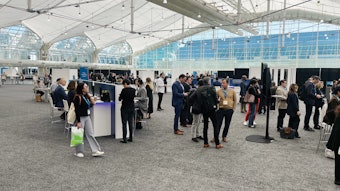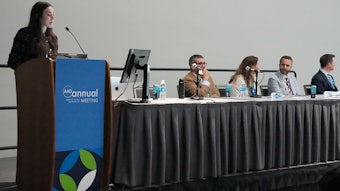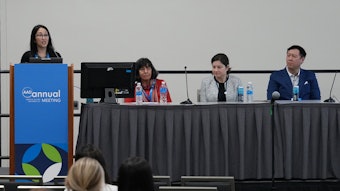That worrisome rash
Tackling pediatric allergic contact dermatitis ASAP.

There’s good reason to rapidly pursue more answers for managing pediatric cases of allergic contact dermatitis. Currently, there are no treatments for allergic contact dermatitis in children except avoidance.
Allergic contact dermatitis occurs at a high prevalence, according to JiaDe Yu, MD, FAAD, professor of adult and pediatric dermatology at Harvard Medical School in Boston. Dr. Yu, who was the director of Saturday’s session, F047 – Considerations in Allergic Contact Dermatitis, said it is estimated to affect about 20% of the world’s general population, and nearly 20% of children with atopic dermatitis, making it an important diagnosis to consider in the clinical setting.
“The goal of our session is to introduce several important concepts, including how to patch test children, what to patch test them to, and finally giving the audience the realization that patch testing in children with atopic dermatitis that is atypical in presentation or response to treatment may yield steroid/systemic-sparing outcomes,” Dr. Yu said.
Top 10 triggers
Part of the session explored the most up-to-date data on the prevalence of contact allergens in children, as published by the North American Contact Dermatitis Group and other international study groups. Another focus was on the top 10 trending allergens affecting children. According to Dr. Yu, the top allergens in children include metals such as nickel and cobalt, preservatives such as methylisothiazolinone and formaldehyde, sudsing agents such as cocamidopropyl betaine and glucosides, and fragrances.
“These are found everywhere in common day-to-day personal care products, toys, chairs at school, homemade slime, etc.,” he said.

Avoidance may be best

“Not patch testing children could potentially miss cases of superimposed allergic contact dermatitis, placing children unnecessarily on systemic treatments of atopic dermatitis,” he said.
Session panelists also provided guidance in the detection of photoallergies in children and their mimickers. Photoallergies in children is an understudied field, Dr. Yu said. The most common causes of photoallergies in children, he said, are chemical sunscreen filters. Physical blockers like zinc and titanium are uncommon causes. Other additives in sunscreens can also cause photoallergies, though phototesting done only at special centers can detect this.
“Mimickers of photoallergy in children are vast and can include allergic contact dermatitis, polymorphous light eruption, juvenile spring eruption, drug photosensitivity, photoirritant dermatitis, or solar urticaria, just to name a few,” Dr. Yu said.
Other presenters included Brandon L. Adler, MD, FAAD; Paul Lorenzo Bigliardi, MD, IFAAD; Shaina George; Margo Reeder, MD, FAAD; and Mykayla Sandler.












